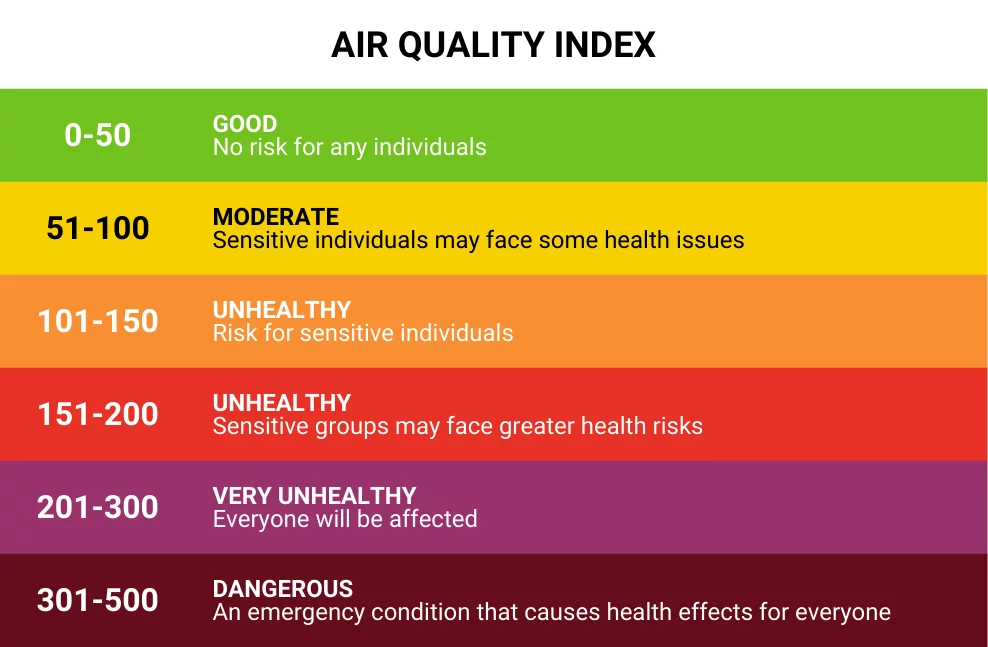The air we breathe significantly impacts our health, with poor quality contributing to conditions such as asthma and allergies. It's important to note that pollutants affecting us aren't limited to outdoor environments alone. According to the World Health Organization, the air breathed by 9 out of 10 people contains high levels of pollutants. While you may not have control over the external environment, one effective way to ensure easier breathing is by monitoring and enhancing the air quality in your home as needed.
The standard metric used to gauge air quality is the Air Quality Index (AQI). This index assesses various pollutants present in the air, such as airborne particles, carbon monoxide, ground-level ozone, nitrogen dioxide, and sulfur dioxide. These pollutants, notably ozone and airborne particles like those from wildfires or urban smog, determine the AQI score, ranging from 0 (safest) to 500 (most hazardous). Air quality reports use color-coded indicators to signify the concentration levels of these pollutants.
)
Ensuring the air quality in indoor environments where we spend a significant amount of time, whether at home or work, is crucial for maintaining our health and well-being. While outdoor air pollution is a concern, indoor air quality can also be compromised by harmful pollutants that go unnoticed. From allergens and volatile organic compounds (VOCs) to imbalanced humidity levels and stagnant air, these factors can contribute to various health issues if left unchecked. Regular air quality testing is essential to identify and mitigate these risks, preventing long-term respiratory illnesses and ensuring a healthier indoor environment at home. Taking proactive measures to address indoor air quality concerns can significantly improve our overall quality of life and comfort.
Health impacts from indoor air pollutants can manifest shortly after exposure or potentially emerge years later.
Immediate effects include irritation of the eyes, nose, and throat, along with headaches, dizziness, and fatigue. Certain diseases like asthma, hypersensitivity pneumonitis, and humidifier fever may also appear shortly after exposure to specific indoor air pollutants. Other health consequences may emerge years after initial exposure or after prolonged and repeated contact. These include various respiratory ailments, cardiovascular conditions, and the potential development of cancer. Several indicators suggest poor air quality in your home such as visible mold or mildew, water damage on ceilings, warped floors, excessive humidity, and unusual odors.
Monitoring the indoor air quality in your home can be challenging without the appropriate equipment and expertise. In such situations, the most effective approach is to seek the help of professional air quality testing services. Professional indoor air quality testing services utilize advanced technology to accurately assess your indoor air quality, detecting harmful pollutants that may be present. Upon identifying any issues, they will advise proactive measures to address and improve your indoor air quality, ensuring a healthier living environment for you and your family.
The Healthy Home® offers a variety of indoor air quality testing services, including physical tests, bacteria and fungus tests, surface swab tests, and comprehensive IAQ tests. Our comprehensive air quality testing services encompass symptom consultation, customized testing plans, sample collection, and detailed assessment reports. Investing in air quality testing can lead to a healthier and more comfortable indoor environment for your family, promoting overall well-being and peace of mind.
